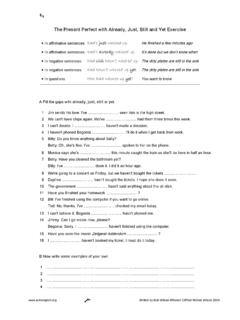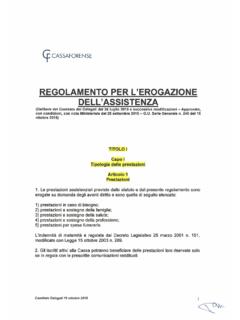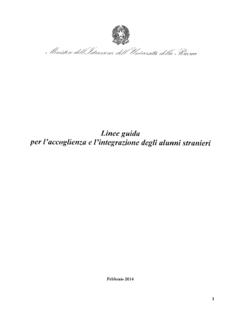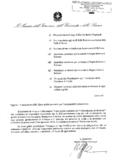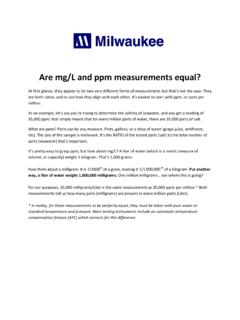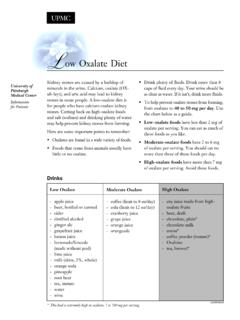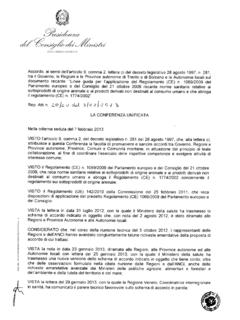Transcription of Agriculture
1 Food production techniques FAO promotes conservation Agriculture to achieve sustainable and profitable Agriculture and, at the same time, protect the environment. Conservation Agriculture is adaptable to farms of all sizes. It is currently practised on more than 117 million hectares, mainly in North and South America and Australia, and increasingly in southern Africa and Central and South sustainable gains in agricultureFAO is helping countries to achieve sustainable gains in Agriculture to feed a growing world population, while safeguarding the natural environment, protecting public health and promoting social equity.
2 FAO does this by helping farmers to diversify food production, protect plant and animal health, reduce the drudgery of farming, market their products and conserve natural resources. FAO also provides assistance to improve nutrition and the quality and safety of the final food products and to minimize risks to human Projections indicate that although growth rates in population and Agriculture will slow, growth in food production will continue to exceed population Arable land per person is shrinking. It decreased from ha in 1970 to ha in 2000, with a projected decline to ha per person by South Asia is using 94 percent of its potentially arable land.
3 In contrast, in sub-Saharan Africa only 22 percent of potentially arable land is under Rainfed Agriculture is practised on 80 percent of the arable land. Irrigated Agriculture produces 40 percent of the world s food crops on the remaining 20 Between 1974 and 2010 the area cultivated using conservation Agriculture grew from just under 3 million ha to more than 117 million In sub-Saharan Africa women contribute between 60 and 80 percent of the labour for food production, both for household consumption and for About 32 percent of livestock breeds are under threat of extinction within the next 20 years.
4 About 75 percent of the genetic diversity of agricultural crops has been lost since Livestock production currently accounts for some 40 percent of the gross value of world agricultural production, and its share is Worldwide, it is estimated that over half a million tonnes of banned, obsolete and unwanted pesticides are threatening the environment and human Improving and protecting plants Farmers rely on genetic resources for improving the quality of their products and the productivity of their farms. Conservation and sustainable use of these resources through plant breeding and a strong seed system is critical to increasing agricultural production and to meeting the challenges of climate change and growing food demands.
5 Continued access to plant genetic resources and a fair and equitable sharing of the benefits arising from their use is essential for food s work in this area involves:n building international awareness of the importance of plant genetic resources;n supporting capacity building; n sharing knowledge for conservation and use of plant genetic International Treaty on Plant Genetic Resources for Food and Agriculture , adopted in 2001, is a major milestone in this harvesting maize, Honduras. FAO/Giuseppe BizzarriWorld average meat consumption per person, 1964-66 20301964-661997-99203050403020100 PoultryPig meatSheep and goat meatBeefLivestock production is increasing to meet the growing demand for : FAOC onsumption (kg/capita/year)Food and Agriculture Organization of the United NationsViale delle Terme di Caracalla00153 Rome, ItalyTelephone: (+39) 06 57051 Fax: (+39) 06 57053152E-mail: enquiries:Telephone: (+39) 06 57053625 Fax: (+39) 06 57053729 Improving and protecting animalsGlobal meat consumption has never been greater.
6 FAO/Balint PornecziGenetic resources are also crucial to livestock breeding and protection. Because of strongly expanding demand, livestock is expected to provide half the total value of food production worldwide by is helping countries to:n use improved technologies to meet this demand; n catalogue the animal genetic resources; n develop policies and standards to protect public and animal health while managing natural meet the challenges of spreading plant and animal diseases, FAO works through the Emergency Prevention System for Transboundary Animal and Plant Pests and Diseases (EMPRES).
7 (See factsheet in this set on EMPRES).Reducing pesticide dependencyFAO promotes integrated pest management to reduce dependency on chemical pesticides. Today millions of farmers have been trained in the method and thousands have become trainers themselves. A number of international agreements help countries address plant health and the human and environmental risks posed by pesticides. The aim is to:n prevent crop losses and the spread of pests that threaten plants and plant products; n promote good practices in pesticide management through regulation and enforcement; n promote the application of standards; n develop technical key focus is on reducing risks from particularly hazardous pesticides by giving importing countries the power to decide whether or not they want to receive certain banned or severely restricted chemicals.
8 FAO also helps countries to identify less hazardous alternative of the world s meat supply in 2007 Poultry 33%Bovine 24%Pig 36%Ovine 5%Other 2% Trade and Markets DivisionCommercialization and value additionFarmers need to sell much or most of their produce in order to make a living. Efforts to encourage sustainable production must go hand in hand with helping farmers to sell their products in local markets and to agro-processors, exporters and other agricultural companies. FAO provides guidance and support to ministries of Agriculture , producers organizations, small and medium agro-enterprises and non-profit business service providers on how to build fair and sustainable relationships between farmers and their buyers.
9 FAO provides support to farmers to help them increase value addition. The Organization also helps small and medium agro-processing enterprises to improve their competitiveness.










